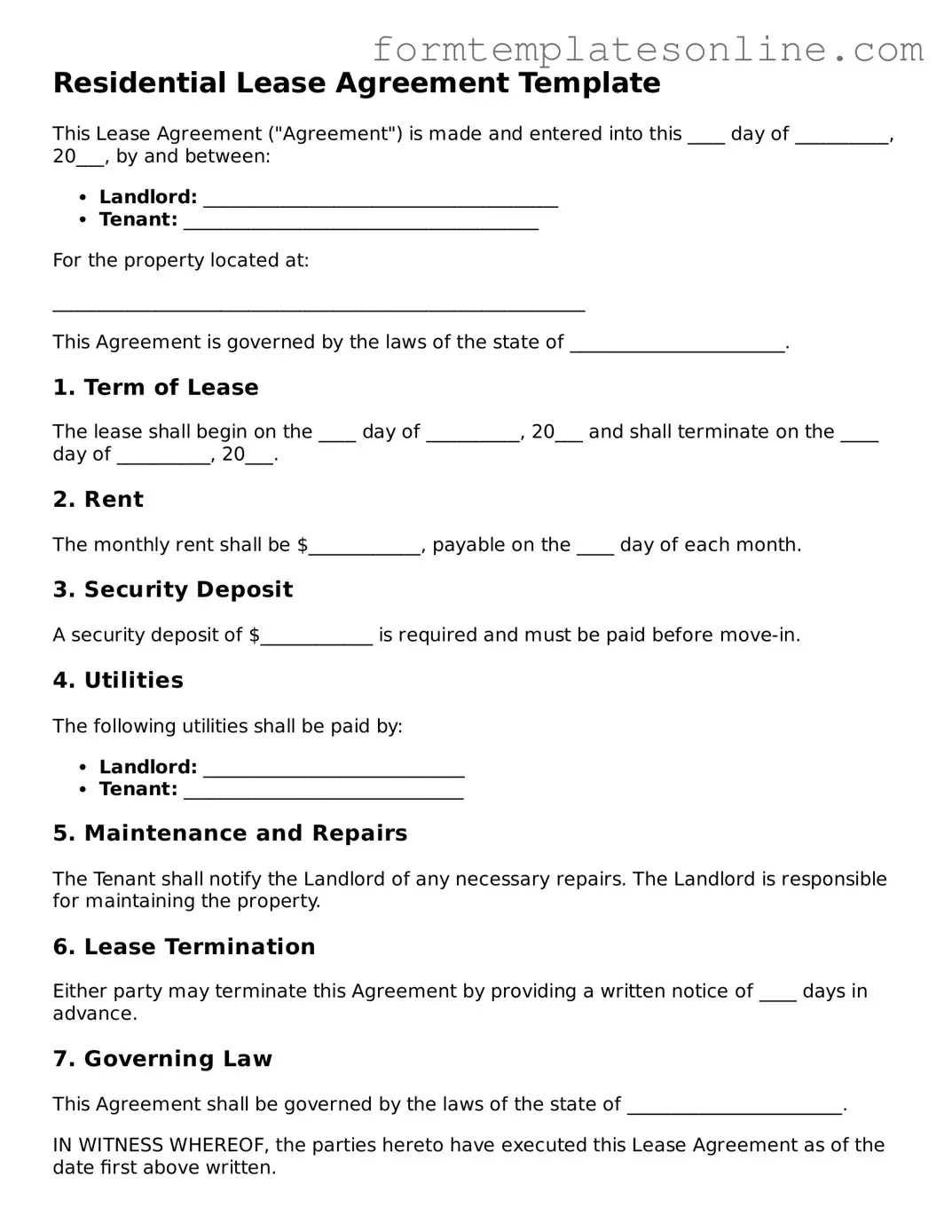What is a Lease Agreement?
A Lease Agreement is a legally binding contract between a landlord and a tenant. It outlines the terms and conditions under which a tenant can occupy a property. This document typically includes details such as the rental amount, duration of the lease, responsibilities of both parties, and rules regarding the use of the property. Having a clear Lease Agreement helps prevent misunderstandings and provides legal protection for both the landlord and the tenant.
What should be included in a Lease Agreement?
A comprehensive Lease Agreement should include several key elements. First, it should state the names of the landlord and tenant, along with the property address. Next, it should specify the lease term—whether it’s a month-to-month arrangement or a fixed-term lease. Additionally, it should outline the rent amount, payment due dates, and any late fees. Other important aspects include security deposits, maintenance responsibilities, and any restrictions on property use. Clear terms regarding termination of the lease and the process for renewing it are also essential.
How long does a Lease Agreement typically last?
The duration of a Lease Agreement can vary widely. Many residential leases are for one year, but they can also be shorter, such as six months, or longer, such as two years. Month-to-month leases are another option, allowing for more flexibility. It’s important for both parties to agree on the lease term before signing, as this will dictate the length of the tenant’s commitment and the landlord’s rights to adjust terms or terminate the agreement.
Can a Lease Agreement be terminated early?
Yes, a Lease Agreement can be terminated early, but the process typically depends on the terms outlined in the agreement itself. Many leases include specific conditions under which either party can terminate the lease early, such as job relocation, military service, or violations of lease terms. If a tenant needs to break the lease, they may be required to provide written notice and potentially pay a penalty or forfeit their security deposit. It’s crucial to review the lease terms to understand the implications of early termination.
What happens if a tenant does not pay rent?
If a tenant fails to pay rent, the landlord has several options, which are generally outlined in the Lease Agreement. Initially, the landlord may issue a late payment notice, giving the tenant a grace period to pay. If the rent remains unpaid, the landlord may begin eviction proceedings, which can involve legal action. It’s important for landlords to follow the proper legal process, as improper eviction can lead to complications. Tenants facing financial difficulties should communicate with their landlord to explore possible solutions.
Is it necessary to have a written Lease Agreement?
While verbal agreements can be legally binding, having a written Lease Agreement is highly recommended. A written document provides clear evidence of the terms agreed upon by both parties, reducing the likelihood of disputes. It serves as a reference point for both landlords and tenants, helping to clarify expectations and responsibilities. In many states, landlords are required to provide a written lease for leases longer than a certain duration, typically one year. Always consult local laws to understand the requirements in your area.
